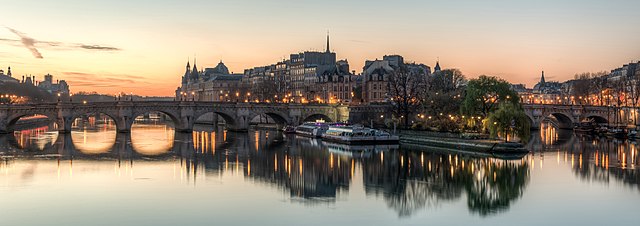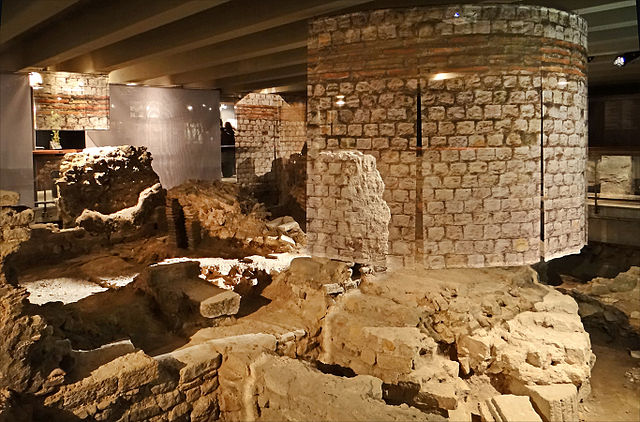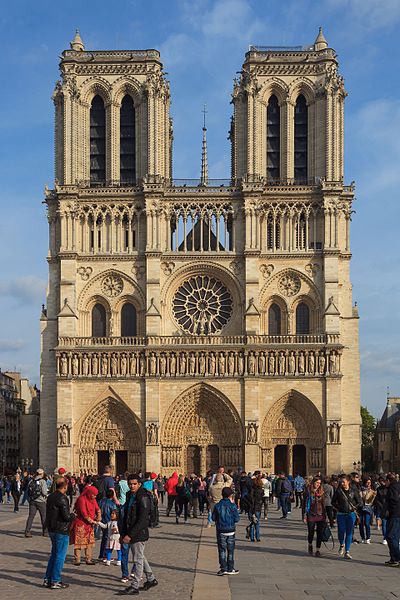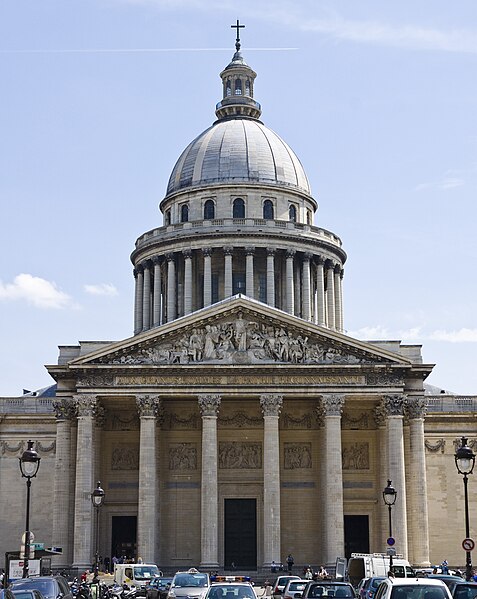Île de la Cité is an island in the river Seine in the center of Paris. In the 4th century, it was the site of the fortress of the area governor for the Roman Empire. In 508, Clovis I, the first King of the Franks, established his palace on the island. In the 12th century, it became an important religious center, the home of Notre-Dame cathedral, and the royal chapel of Sainte-Chapelle, as well as the city hospital, the Hôtel-Dieu. It is also the site of the city's oldest surviving bridge, the Pont Neuf.
Île de la Cité, in the center of Paris (2014)
Île de la Cité (2009)
Image of Jupiter on the Pillar of the Boatmen (1st century AD), Cluny, Musée National du Moyen Age
Archeological crypt under the Parvis Notre-Dame – Place Jean-Paul II
Paris is the capital and most populous city of France. With an official estimated population of 2,102,650 residents as of 1 January 2023 in an area of more than 105 km2 (41 sq mi), Paris is the fourth-most populated city in the European Union and the 30th most densely populated city in the world in 2022. Since the 17th century, Paris has been one of the world's major centres of finance, diplomacy, commerce, culture, fashion, and gastronomy. For its leading role in the arts and sciences, as well as its early and extensive system of street lighting, in the 19th century, it became known as the City of Light.
Image: La Tour Eiffel vue de la Tour Saint Jacques, Paris août 2014 (2)
Image: 04 2017. Notre Dame de Paris 71
Image: Basilique du Sacré Cœur de Montmartre, Paris 18e 140223 2
Image: Paris Pantheon Facade








